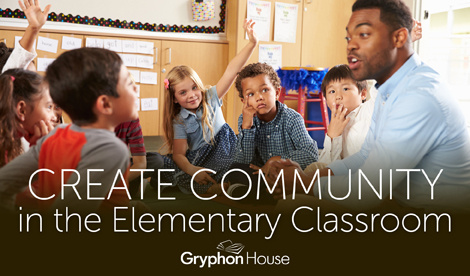
A classroom is a world unto itself. Each one has its own setup, rules, and population. It’s no surprise, then, that classrooms often create their own communities. As educators, it’s important to nurture this community and use it to enhance the learning process. An inclusive classroom with a strong sense of unity between students can sometimes reduce disciplinary problems and make it easier for students to learn, which is, of course, every teacher’s goal! However, the word “community” is rather broad. Just how do teachers build up this part of the classroom environment?
Daily Schedules
Routine is good for young children, especially when they are just entering school. Posting a visible, color-coded classroom schedule will allow children to track their progress throughout the day and move through transitions smoothly. It’s best to hang the schedule near the front of the room and go over it at the beginning of the day, then referencing it again as they children move to the next activity. If there are regular daily changes—i.e. alternating art and music days—make sure to highlight them. The display of a schedule helps young children understand that there are many things that are constant in their classroom—they will eat lunch at the same time every day, go out to recess every day, and will only be in reading time once a day. When children know where they’re going to be and what they are going to do, they can focus more on the teacher’s instructions. The shared schedule will also illustrate how the students move and learn together within the classroom environment.
Responsibility Charts
Responsibility charts are invaluable! They not only allow the students to help keep the classroom tidy, but also exhibit the different ways individuals can help their community at large. The charts can be set up with children’s pictures beside their weekly duties, a model that creates a certain pride among the students. If children see their pictures or names beside of a chore, they are able to take ownership of it and will have more motivation to accomplish the task. Children love to be given jobs that they feel are important, so creating a chore chart builds confidence as well as responsibility. Having an organized system to chores may also reduce conflicts over whose turn it is to pick up the toys or who gets to help pass out snacks, reducing problem behavior in the process.
Community Gatherings
Community gatherings are times when the teachers and students come together to talk and interact with one another. This may be through games, stories, open discussions, or anything else that serves to create a positive listening environment. In early elementary classrooms, these gatherings are best done in a predictable manner. They should happen consistently on the same day—(like every Friday)—and should follow the same structure. One excellent example of a community activity is an open art period. Gather the children together in the largest part of the room, give them a prompt to draw, and then let them be creative for a few minutes. At the end, you can discuss what the students drew and why, facilitating communication.
Calming Areas
Community is not always centered on multiple people interacting. To set up a healthy environment for young children, it helps to have certain stations or areas in the room where children can be alone and quiet. Rules surrounding these areas can prove very beneficial for curbing disruptive behavior; if a child is known to be prone to tantrums or meltdowns, educators can teach them to go to the calming area when they are overwhelmed, thus halting the negative behavior before it starts. Calming areas can be set up by creating a nook out of bookshelves or by hanging sheets or parachutes to form a tent. The isolation of these setups will make children feel safe within the area and will help them stay relaxed.
Post Office Center
This cute activity extends the community beyond the classroom. Teachers can set up a special post-office station near the front of the room where parents, other educators, and other students can write positive notes to the children and place them in their mailbox. At the beginning of class once or twice a week, the children can check their boxes and read the notes people have left them. The positive remarks will make children feel special and appreciated, while the activity of checking their mailboxes will allow them to draw parallels between the classroom environment and their communities at home. Seeing notes from parents may also help relieve homesickness and tension that may be present in young children when they first enter school.
Community is a big part of the classroom. If children are not comfortable and accepted in their environment, they won’t be able to learn efficiently. They may even act out in an attempt to express their discomfort. Building community through scheduling, organization, and activities helps reduce challenging behaviors while making it easier for young children to learn new concepts. It is an excellent way to make the jobs of both teacher and student easier.
Author(s)William DeMeo
Marketer. Publisher. Reporter. Educator. Mother. Runner. Explorer. Anna served as director of marketing for Gryphon House from Oct 2014 - May 2017.
Topics: